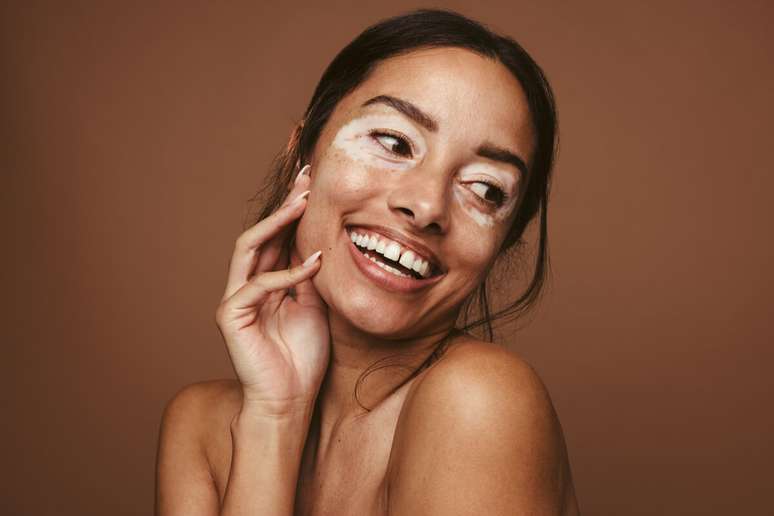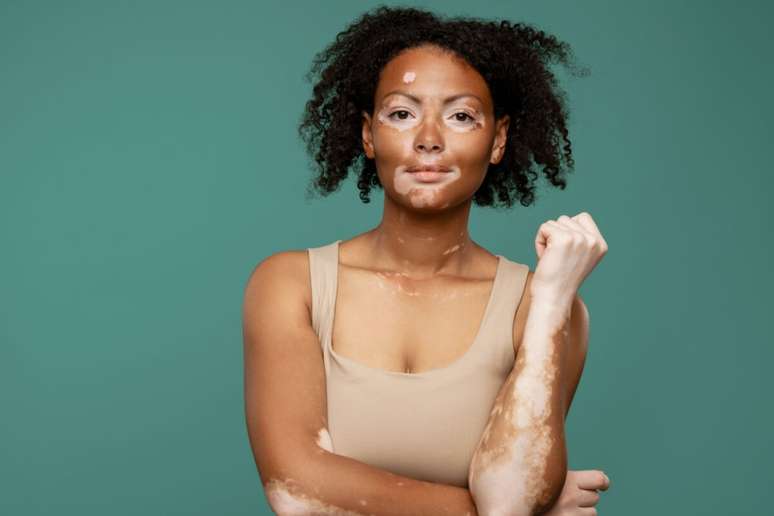The main and unique symptom of the disease presented by the vast majority of patients is the emergence of white skin spots
The World Vitiligo Day, celebrated on June 25, is an important moment to expand the understanding of this autoimmune disease that causes the gradual loss of the color of the skin. It is estimated that about 1% of the global population lived in the condition, facing not only physical challenges, but also emotional and social impact.
“Even if it is a benign and non -contagious disease, the injuries caused by vitiligo They generate a significant impact on the quality of life and self -esteem of the patient. In general, there is a psychological, professional and social impact on the patient’s life “, says Dermatologist Dr. Paola Pomorantezeff, a member of the Brazilian society of dermatology.
Vitiligo symptoms and causes
According to the doctor, the main and unique symptom of the disease presented by the vast majority of patients is the emergence of acromic skin points (without pigmentation), that is, white spots of various sizes in skin What form due to the decrease or absence of melanin, a pigment produced by melanocytes in the places concerned.
“The causes of vitiligo are still unknown, but it is already known that autoimmune phenomena and emotional changes, such as stress, are factors related to the disease and can trigger or aggravate it. Furthermore, people who have a history of vitiligo in the family are more likely to suffer from the disease”, he explains.
Types of vitiligo
Clinically diagnosed by a dermatologist, vitiligo can be classified in two types: segmental or unilateral and non -segmental or bilateral. The first, which usually appears when the patient is still young, manifests itself only in a part of the body and can also affect the color of the hair and hair.
“Non vitiligo or bilateral non segmentary is the most common type of disease and manifests itself in a widespread way, usually it emerges first at the ends of the body, like hands and feet. It develops in color and stagnation cycles that last a life and tend to become bigger over time”, adds Dr. Paola Pomantzeff.

Face vitiligo
As for prevention, there are no known or scientifically proven ways that help to avoid the emergence of vitiligo. However, patients who tend or already suffer from the disease should avoid factors who can accelerate the appearance of new injuries or accentuate existing ones, such as prolonged sun exposure, skin lesions and stress.
As for the way of dealing with the disease, many famous people claim to cover the areas affected with the use of makeup and recently many campaigns have strengthened the importance of self -esteem and nailed to accept the body with vitiligo.
Disease treatment
As for the treatment, Dr. Paola Pomentezeff explains that, although vitiligo does not have a cure, there are therapeutic options capable of controlling and improving the disease, to avoid increasing lesions and rejecting the skin.
“UVB-NB radiation phototherapy is indicated for almost all forms of vitiligo, promoting great results. Furthermore, in most cases other technologies such as Phototherapy Puva, Lasers, Melanocial Transplant Techniques can also be used. In most cases.
Accompanying with the dermatologist It is important to monitor the symptoms and the onset of the disease. “But it is essential to consult a dermatologist when you notice the symptoms of the disease, since the results of the treatment can vary between each case and a single qualified professional can indicate the best option based on the characteristics of each patient”, concludes the expert.
By Maria Claudia Amoroso
Source: Terra
Ben Stock is a lifestyle journalist and author at Gossipify. He writes about topics such as health, wellness, travel, food and home decor. He provides practical advice and inspiration to improve well-being, keeps readers up to date with latest lifestyle news and trends, known for his engaging writing style, in-depth analysis and unique perspectives.









